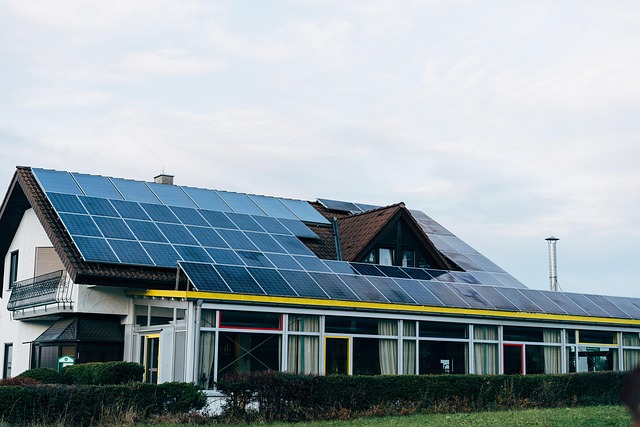Prefabricated Homes – Affordable and Efficient Housing Options with Fast Installation
Prefabricated homes represent a revolutionary approach to modern housing, offering homeowners a faster, more cost-effective alternative to traditional construction methods. These factory-built structures combine innovative manufacturing techniques with quality materials to deliver complete housing solutions in significantly less time than conventional building processes.

The housing market continues to evolve, with prefabricated homes gaining momentum as a viable solution to address affordability concerns and construction delays. These innovative structures combine modern manufacturing techniques with traditional home comforts, creating opportunities for homeowners to achieve their property goals more efficiently.
What Are Prefabricated Homes and How Do They Work?
Prefabricated homes are residential structures manufactured in factory settings using standardised processes and quality control measures. The construction process begins with detailed planning and design, followed by the fabrication of individual components or entire sections in climate-controlled facilities. These elements are then transported to the building site for assembly, typically requiring specialised equipment and trained installation teams.
The manufacturing process involves cutting, shaping, and assembling materials according to precise specifications. Quality checks occur at multiple stages, ensuring consistency and compliance with building regulations. Once complete, sections are carefully packaged and shipped to the destination, where foundation work has been prepared in advance.
Why Choose Efficient Prefabricated Homes Over Traditional Construction?
Prefab homes offer several distinct advantages compared to conventional building methods. Factory production eliminates weather-related delays, allowing construction to proceed regardless of outdoor conditions. This controlled environment also reduces material waste and enables better quality control throughout the manufacturing process.
The efficiency extends beyond production to include reduced labour requirements on-site and minimised disruption to surrounding areas. Environmental benefits include lower waste generation, improved energy efficiency through precise construction techniques, and the potential for incorporating sustainable materials and technologies during the manufacturing phase.
How Fast Can Prefabricated Homes Be Installed?
Installation timelines for prefabricated homes vary depending on size, complexity, and site conditions. Simple single-storey structures can often be assembled within days, while larger multi-storey homes may require several weeks for complete installation. The key advantage lies in the simultaneous progress of foundation preparation and factory manufacturing, significantly reducing overall project duration.
Weather conditions, accessibility, and local regulations can influence installation speed. However, most prefab homes achieve substantial completion within 3-6 months from order to occupancy, compared to 6-12 months for traditional construction methods.
What Design Options Are Available for Modern Prefab Homes?
Contemporary prefabricated homes offer extensive customisation possibilities, challenging outdated perceptions of limited design choices. Manufacturers provide various architectural styles, from traditional cottage designs to ultra-modern minimalist structures. Interior layouts can be tailored to specific requirements, including open-plan living spaces, multiple bedrooms, and specialised areas such as home offices or studios.
Material selections encompass timber frame, steel frame, and hybrid construction methods. External finishes include brick, stone, timber cladding, and contemporary composite materials. Smart home technology integration, energy-efficient systems, and sustainable features can be incorporated during the design phase.
How Much Do Affordable Prefabricated Homes Actually Cost?
Prefab home costs vary significantly based on size, specification, and location factors. Understanding the pricing structure helps potential buyers make informed decisions about this housing option.
| Home Type | Size Range | Cost Estimation | Key Features |
|---|---|---|---|
| Basic Single-Storey | 50-80 sqm | £80,000-£120,000 | Standard finishes, basic utilities |
| Family Home | 100-150 sqm | £150,000-£250,000 | Multiple bedrooms, modern kitchen |
| Luxury Prefab | 200+ sqm | £300,000-£500,000 | Premium materials, smart technology |
| Eco-Friendly | 80-120 sqm | £120,000-£200,000 | Sustainable materials, energy systems |
Prices, rates, or cost estimates mentioned in this article are based on the latest available information but may change over time. Independent research is advised before making financial decisions.
Additional costs include site preparation, foundation work, utility connections, and planning permissions. These expenses typically add 20-30% to the base home price. Financing options for prefab homes have improved, with many lenders now offering competitive mortgage products specifically designed for this market segment.
Location significantly impacts total costs, with rural sites potentially requiring additional infrastructure investment. However, the predictable pricing structure of prefab homes allows for more accurate budget planning compared to traditional construction projects.
Long-term Value and Considerations
Prefabricated homes demonstrate strong potential for property value retention and appreciation, particularly as construction quality and design standards continue to improve. Energy efficiency features often result in lower operational costs, contributing to long-term affordability. Maintenance requirements are generally comparable to traditional homes, with some prefab construction methods offering enhanced durability.
The growing acceptance of prefabricated construction in the housing market, supported by government initiatives promoting innovative building methods, suggests positive prospects for this sector. As technology advances and manufacturing processes become more sophisticated, prefab homes are likely to become an increasingly mainstream housing solution, offering practical benefits for a wide range of homebuyers seeking efficient, affordable, and quality residential options.




